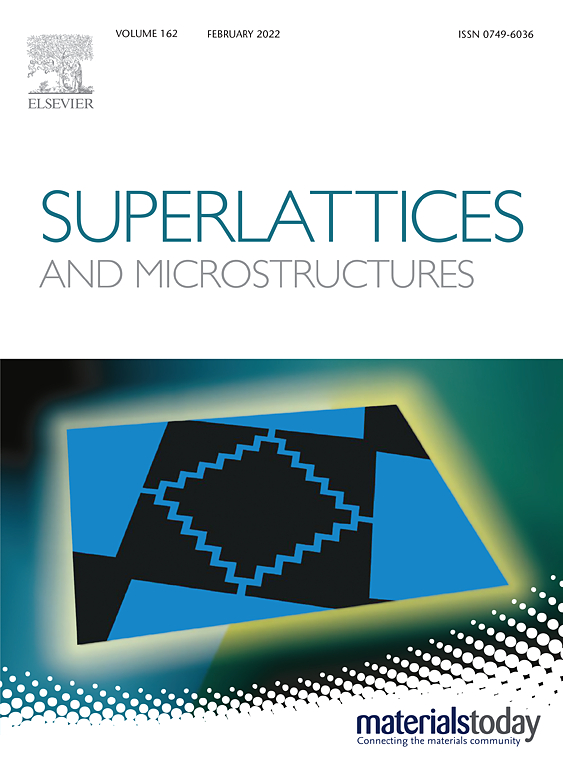HfO2薄膜的微观结构演变和铁电性
IF 3.3
3区 物理与天体物理
Q2 PHYSICS, CONDENSED MATTER
引用次数: 9
摘要
铁电材料通常采用非中心对称的钙钛矿结构,具有自发极化特性,在存储器、机电和储能器件中具有广阔的应用前景。然而,这些先进的应用受到钙钛矿FEs固有局限性的影响,包括互补金属氧化物半导体(CMOS)兼容性差以及与铅相关的环境问题。具有稳定体中心对称相的氧化铪(HfO2)在纳米级薄膜中由于非中心对称相的形成而具有强大的铁电性。由于其高CMOS兼容性和高可扩展性,HfO2备受关注。在过去的十年中,人们已经做出了巨大的努力来探索铁电性的起源和影响HfO2薄膜中FE性能的因素,特别是关于微观结构的作用,这对于澄清这些问题至关重要。虽然已经发表了几篇关于HfO2薄膜的综合综述,但目前还没有关于微观结构与FE性能之间关系的综述。本文综述了FE多晶和外延HfO2薄膜的微观结构-性能关系。首先讨论了HfO2多晶的晶体结构和表征方法。综述了多晶HfO2薄膜在生长参数或外界刺激下的微观结构- fe性能关系、相变的驱动力和动力学途径。对于外延薄膜,讨论了HfO2薄膜与衬底之间的晶格匹配关系及其对FE性能的影响。基于不同的微观结构特征,比较了多晶和外延HfO2薄膜的FE性能。最后,对FE - HfO2薄膜的进一步研究进行了展望。本文章由计算机程序翻译,如有差异,请以英文原文为准。
Microstructural evolution and ferroelectricity in HfO2 films
Ferroelectric (FE) materials, which typically adopt the perovskite structure with non-centrosymmetry and exhibit spontaneous polarization, are promising for applications in memory, electromechanical and energy storage devices. However, these advanced applications suffer from the intrinsic limitations of perovskite FEs, including poor complementary metal oxide semiconductor (CMOS) compatibility and environmental issues associated with lead. Hafnium oxide (HfO2), with stable bulk centrosymmetric phases, possesses robust ferroelectricity in nanoscale thin films due to the formation of non-centrosymmetric phases. Owing to its high CMOS compatibility and high scalability, HfO2 has attracted significant attention. In the last decade, significant efforts have been made to explore the origin of the ferroelectricity and factors that influence the FE properties in HfO2 films, particularly regarding the role of microstructure, which is vital in clarifying these issues. Although several comprehensive reviews of HfO2 films have been published, there is currently no review focused on the relationship between microstructure and FE properties. This review focuses on the microstructure-property relationships in FE polycrystalline and epitaxial HfO2 films. The crystallographic structures and characterization methods for HfO2 polymorphs are first discussed. For polycrystalline HfO2 films, the microstructure-FE properties relationships, driving force and kinetic pathway of phase transformations under growth parameters or external stimuli are reviewed. For epitaxial films, the lattice matching relations between HfO2 films and substrates and the corresponding impact on the FE properties are discussed. The FE properties between polycrystalline and epitaxial HfO2 films are compared based on their different microstructural characteristics. Finally, a future perspective is given for further investigating FE HfO2 films.
求助全文
通过发布文献求助,成功后即可免费获取论文全文。
去求助
来源期刊

Superlattices and Microstructures
物理-物理:凝聚态物理
CiteScore
6.10
自引率
3.20%
发文量
35
审稿时长
2.8 months
期刊介绍:
Superlattices and Microstructures has continued as Micro and Nanostructures. Micro and Nanostructures is a journal disseminating the science and technology of micro-structures and nano-structures in materials and their devices, including individual and collective use of semiconductors, metals and insulators for the exploitation of their unique properties. The journal hosts papers dealing with fundamental and applied experimental research as well as theoretical studies. Fields of interest, including emerging ones, cover:
• Novel micro and nanostructures
• Nanomaterials (nanowires, nanodots, 2D materials ) and devices
• Synthetic heterostructures
• Plasmonics
• Micro and nano-defects in materials (semiconductor, metal and insulators)
• Surfaces and interfaces of thin films
In addition to Research Papers, the journal aims at publishing Topical Reviews providing insights into rapidly evolving or more mature fields. Written by leading researchers in their respective fields, those articles are commissioned by the Editorial Board.
Formerly known as Superlattices and Microstructures, with a 2021 IF of 3.22 and 2021 CiteScore of 5.4
 求助内容:
求助内容: 应助结果提醒方式:
应助结果提醒方式:


